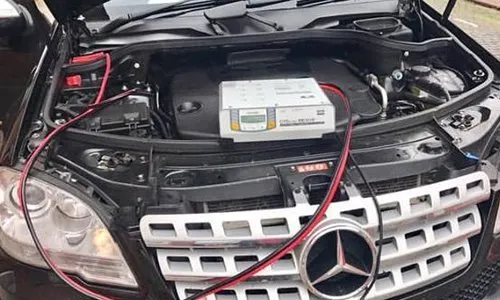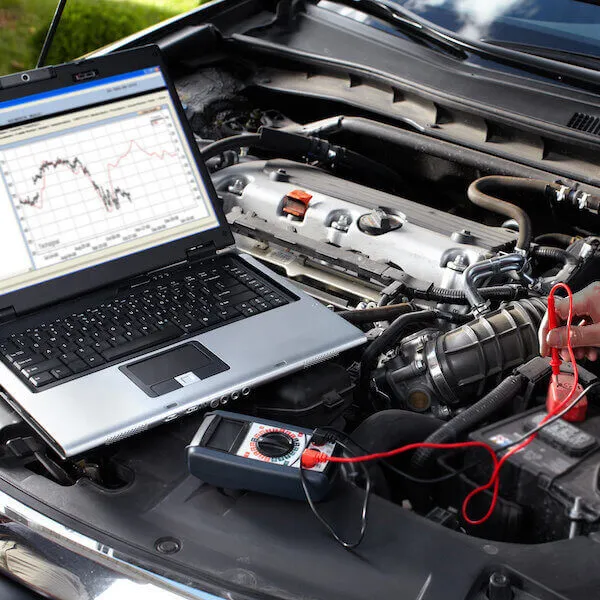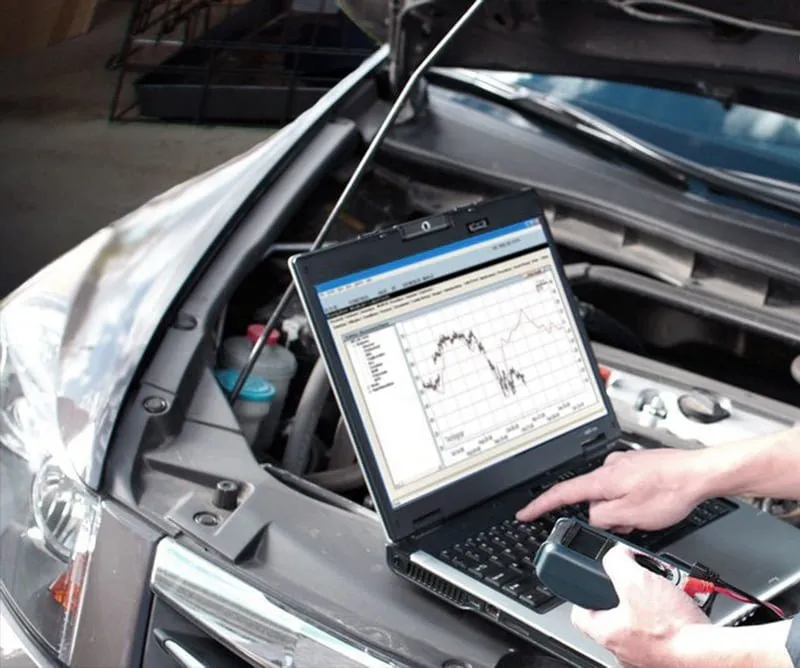Table of Contents
Table of Contents
Introduction to DIY ECU Remapping
If you’re looking for a DIY guide on how to remap an ECU yourself, you’ve come to the right place. This subject can be quite difficult and even frustrating if you’re not aware of what you are doing. If you’re looking for a professional opinion about what you should do, find someone who knows what they’re talking about and is experienced in this particular area. Otherwise, you’ll probably end up doing something that either costs you a lot of money or doesn’t work at all. The last thing you want is to waste time and money because you didn’t know what you were doing. Let me share with you a simple method that anyone can implement.
How Do You Remap an ECU Yourself?
The first way is by rebuilding the actuator. This is the part of your system that actually moves the fluid through your engine. You can rebuild this actuator by simply cutting off the sealing surface to the actuator. This is done by undoing the nut that attaches the actuator to the valve.
The other way is by using a sharp cutting tool to cut off a section of the valve and then replacing the valve itself. To do this, you’ll need to remove the gasket that protects your seal (this will make it easier to remove the valve itself). Once the gasket is removed, you’ll need to cut a hole in the top of the valve and insert the stainless steel screw into this hole. This will allow you to cut away the old seal and put a new one in place.
One of the downsides to this is that you’re permanently destroying one of your seals. Another potential downside is that you’re potentially voiding your warranty if you’re replacing parts improperly. So, if you’re not an expert, it’s probably not a good idea to do this. If you have the experience, I highly recommend that you either hire someone to remap your system for you or replace the valve completely.
Now, if you’re doing this for diagnosing a problem in your system then I’d highly recommend that you don’t cut the valve itself. Doing this could lead to a seal leak which could void your warranty. Instead, what you want to do is place a very small amount of water between the valve and the actuator. This will keep the liquid from leaking out between the two and thus causing a less leak-prone system.
Now that you’ve figured out how to remap an ECU yourself, the next step is to run diagnostics on your system to pinpoint where the problem actually lies. The most common problems would be poor connections, dirty filters or clogged air flow. If you’re able to see that there’s something wrong with the ECU, then you can either order some parts and fix it or upgrade to a more powerful unit. Either way, this step isn’t very difficult and is often done by plugging in a meter from your computer.
Finally, you need to know how to remap an ECU manually. This is often more difficult than replacing or upgrading the unit, but it can still be done. Basically, you have to find where the old one goes and unhook it from the power source. This can be tricky and can sometimes require some old parts to be able to complete the task, so you may want to either call a professional or search around for some vintage or antique parts.
Understanding ECU Remapping Fundamentals
What Exactly is ECU Remapping?

ECU remapping involves modifying the software parameters stored within your vehicle’s Engine Control Unit to optimize performance, fuel efficiency, or both. The ECU contains maps or tables that determine how the engine responds under various conditions including throttle position, engine load, temperature, and RPM. By altering these maps, you can change how your engine behaves.
Different Types of ECU Remapping Approaches
There are several approaches to ECU remapping, each with varying levels of complexity and risk. Software-based remapping involves directly modifying the ECU’s programming through the diagnostic port. Hardware modifications require physical alterations to the ECU components. Piggyback systems work by intercepting and modifying signals between the ECU and engine components without permanently altering the original programming.
Legal and Warranty Considerations
Before attempting any ECU modifications, understand the legal implications in your area. Some regions have strict emissions regulations that modified ECUs may violate. Additionally, any ECU modifications will likely void your vehicle’s warranty. Document your original ECU settings and consider the long-term implications before proceeding with any modifications.
Essential Tools and Equipment for DIY ECU Remapping
Basic Hardware Requirements
Successful ECU remapping requires specific tools and equipment. You’ll need a reliable laptop computer with sufficient processing power and memory. An OBD-II cable or specialized ECU interface cable specific to your vehicle make and model is essential for communication with the ECU. A stable power supply or battery maintainer ensures consistent power during the remapping process.
Software and Programming Tools
Professional ECU remapping software can be expensive, but several options exist for DIY enthusiasts. Some popular choices include WinOLS, ECU Flash, and manufacturer-specific tools. Free alternatives like TunerPro RT offer basic functionality for beginners. Ensure any software you choose is compatible with your specific ECU type and has adequate documentation and community support.
Safety and Backup Equipment
Always have proper backup solutions before attempting ECU remapping. An EEPROM programmer allows you to create physical backups of your ECU’s memory chips. Multiple USB drives for software backups and a reliable internet connection for downloading updates and seeking help are essential. Consider having a spare ECU if working on a critical vehicle.
Pre-Remapping Preparation Steps
Vehicle Assessment and Documentation
Before beginning any remapping work, thoroughly assess your vehicle’s current condition. Document existing performance characteristics, fuel economy, and any existing issues. Take detailed photographs of the ECU location and connections. Record all current ECU software versions and part numbers for reference during the remapping process.
Creating Comprehensive Backups
The most critical step in DIY ECU remapping is creating reliable backups of your original ECU software. Use multiple methods to ensure backup integrity including reading the ECU memory multiple times and comparing checksums. Store backups in multiple locations and clearly label them with date, vehicle information, and ECU details.
Setting Up Your Workspace
Establish a clean, well-lit workspace with adequate ventilation and stable surfaces for your equipment. Ensure you have reliable electrical power and good lighting. Organize your tools and documentation for easy access during the remapping process. Have emergency contact information for professional help readily available.
Step-by-Step DIY Remapping Process
Connecting to the ECU
Begin by locating your vehicle’s diagnostic port, typically found under the dashboard near the driver’s position. Connect your interface cable and establish communication with the ECU using your chosen software. Verify that you can successfully read ECU information before proceeding with any modifications.
Reading and Analyzing Original Maps
Once connected, read the current ECU maps and save them as your baseline. Study the existing maps to understand how different parameters affect engine performance. Look for areas where improvements might be possible, such as fuel delivery timing, ignition advance curves, and boost pressure limits if applicable.
Making Conservative Modifications
Start with small, conservative changes to avoid damaging your engine. Modify one parameter at a time and test thoroughly before making additional changes. Focus on areas where you have clear understanding and avoid making dramatic alterations that could cause engine damage or unsafe operating conditions.
Testing and Validation
After each modification, thoroughly test your changes under controlled conditions. Monitor engine parameters using diagnostic tools and pay attention to any unusual sounds, vibrations, or performance characteristics. Keep detailed records of each change and its effects for future reference.
Advanced DIY Remapping Techniques
Custom Map Development
As you gain experience, you can develop custom maps tailored to your specific driving needs and vehicle modifications. This involves understanding the relationship between different ECU parameters and how they interact to affect overall engine performance. Advanced mapping requires significant knowledge of engine theory and extensive testing.
Multi-Map Programming
Some ECU systems allow multiple maps to be stored and switched between different driving modes. Learning to program and implement multi-map systems gives you the flexibility to optimize for different conditions such as economy driving, performance driving, or different fuel octane ratings.
Integration with Other Modifications
ECU remapping becomes more complex when integrated with other engine modifications such as turbocharger upgrades, exhaust system changes, or intake modifications. Each modification affects how the engine responds and may require corresponding ECU adjustments to maintain optimal performance and reliability.
Common Challenges and Troubleshooting

Communication Problems
One of the most common issues in DIY ECU remapping is establishing and maintaining reliable communication with the ECU. This can be caused by faulty cables, incorrect software settings, or ECU security features. Troubleshooting requires systematic checking of connections, software configurations, and sometimes trying different communication protocols.
Software Compatibility Issues
Different ECU generations and manufacturers use various communication protocols and memory structures. Ensuring your software and interface hardware are compatible with your specific ECU is crucial. Sometimes multiple software packages are needed to handle different aspects of the remapping process.
Parameter Conflicts and Engine Issues
Incorrect parameter settings can cause engine problems ranging from poor performance to serious damage. Understanding which parameters interact and how to safely adjust them requires extensive knowledge and careful testing. Always make incremental changes and thoroughly test before making additional modifications.
Safety Considerations and Risk Management
Engine Protection Strategies
When remapping an ECU, always implement safety strategies to protect your engine from damage. Set conservative limits for critical parameters such as maximum boost pressure, fuel delivery rates, and ignition timing. Monitor engine temperatures and pressures closely during testing and avoid sustained high-load operation until you’re confident in your modifications.
Emergency Procedures
Have clear emergency procedures in place before beginning ECU remapping. Know how to quickly restore your original ECU programming if problems arise. Keep emergency contact information for professional tuners who can assist if you encounter serious issues. Never drive a vehicle with untested ECU modifications under demanding conditions.
Legal and Insurance Implications
Understand that DIY ECU remapping may have legal and insurance implications. Modified vehicles may not pass emissions testing or vehicle inspections. Insurance companies may refuse claims related to modified vehicles or require disclosure of modifications. Consider these factors before beginning any remapping project.
Performance Optimization Strategies
Fuel Economy Improvements
ECU remapping can significantly improve fuel economy when done correctly. Focus on optimizing fuel delivery maps for cruising conditions, improving combustion efficiency through better ignition timing, and reducing pumping losses through throttle response optimization. Monitor real-world fuel economy to validate your improvements.
Power and Torque Enhancement
Increasing engine power through ECU remapping involves optimizing fuel delivery, ignition timing, and boost pressure if applicable. Focus on areas where the factory programming is conservative due to emissions requirements or component longevity concerns. Always ensure adequate safety margins to prevent engine damage.
Drivability Enhancements
Beyond raw performance, ECU remapping can improve overall drivability through better throttle response, smoother idle characteristics, and optimized transmission shift points. These improvements often provide more noticeable day-to-day benefits than pure power increases.
Long-Term Maintenance and Updates
Monitoring Modified Systems

Vehicles with remapped ECUs require more careful monitoring than stock vehicles. Regularly check engine parameters, monitor for unusual wear patterns, and pay attention to any changes in performance or behavior. Keep detailed maintenance records and be prepared to adjust ECU parameters as the engine ages or conditions change.
Software Updates and Revisions
As you gain experience and your vehicle’s needs change, you may want to update or revise your ECU programming. Keep your original backups safe and document all changes made over time. Consider periodic professional evaluation of your modifications to ensure they remain safe and effective.
Preparing for Professional Service
When taking a vehicle with modified ECU programming for professional service, be upfront about modifications and provide documentation of changes made. Some service facilities may require restoration to stock programming before performing warranty work or emissions testing.
Building Your ECU Remapping Skills
Educational Resources and Training
Developing ECU remapping skills requires ongoing education and practice. Utilize online forums, technical documentation, and educational courses to build your knowledge. Join communities of other DIY tuners who can provide guidance and support as you develop your skills.
Practice and Experimentation
Start with less critical vehicles or practice ECUs when possible to develop your skills before working on your primary vehicle. Experiment with different software packages and techniques to find approaches that work best for your specific applications and skill level.
Professional Development Opportunities
Consider formal training opportunities or certification programs in ECU tuning if you plan to pursue this as more than a hobby. Professional training can provide structured learning and access to advanced tools and techniques that may not be available to casual DIY enthusiasts.
Conclusion and Final Recommendations
DIY ECU remapping can be a rewarding project that improves your vehicle’s performance and your understanding of engine management systems. However, it requires significant knowledge, patience, and attention to safety. Start conservatively, invest in proper tools and education, and always prioritize engine safety over maximum performance gains. Consider professional assistance for complex modifications or if you’re unsure about any aspect of the process. With proper preparation and careful execution, DIY ECU remapping can provide significant improvements to your vehicle’s performance and efficiency.


